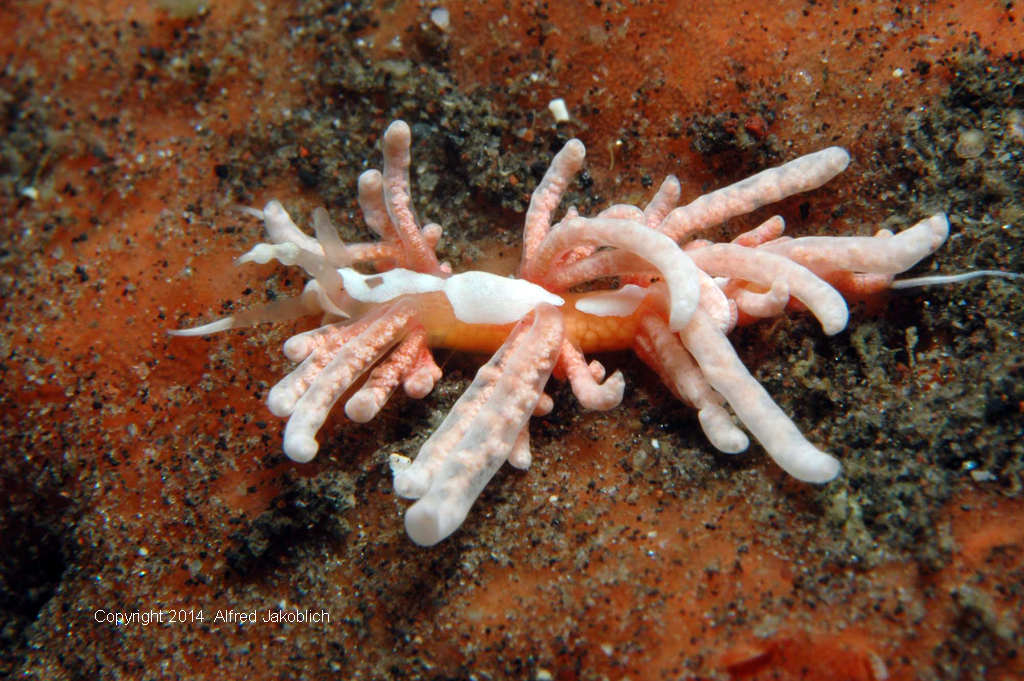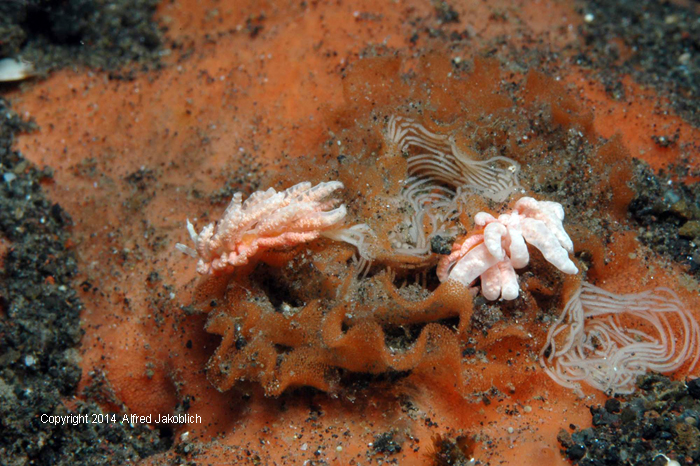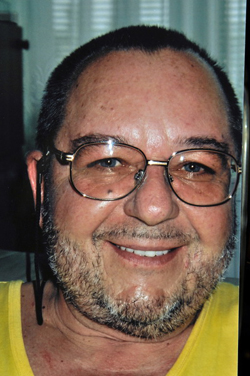 |
Favorinus japonicus
Image courtesy of Alfred Jakoblich
Coral Garden, Tulamben, Bali, Indonesia
Favorinus japonicus with prey egg mass and their own
 | Favorinus japonicus Baba, 1949
This is an amazing photo of this highly variable species. We knew immediately that it was a Favorinus due to the bulbous swellings on the rhinophores. This species varies in ceratal color based on the eggs it has just fed upon. They can be white, yellow pink or orange. Can't wait to see one that has fed on the blue eggs of a species like Taringa halgerda (Bill Rudman's Sea Slug Forum). This species has obviously taken on the color of the red dorid eggs seen in Fred's photo of the mating pair . Here we can even see Favorinus' while egg spiral laid on the typical dorid egg ribbon. This fantastic photo tells the whole story of this slug's life cycle. This is one of the larger Favorinids reaching over 20mm in length. The species is known form throughout the West and Indo-Pacific Oceans Keep your eyes open for us, and snap a shot of any unusual color variations to add to our database. |
Sammamish, WA 98074
Jan., 2014
Send Dave email at davidwbehrens@gmail.com
Alfred Jakoblich
 |
Born in 1944, I started snorkeling at about 15 years old. Scuba diving followed in 1972. After 7 years of diving in Greece. In 1978, I made the first trip to the Maldives. After three times diving the Maldives, I made different diving trips and törns at Red Sea, Carribean Sea, Sea of Cortez, Australia (Great White Shark with Rodney Fox), Cocos Island, Galapagos. My first trip to the Bali/Tulamben area was in 1997. There my photographic interests shifted more and more to close ups and macro. Also, I have visted the Sulawesi/Lembeh area some seven times in sucession. Since about 2005, I have specialized in the documentation of nudibranches, but I try also to get a personal catalogue of all reef creatures of the Indo-Pacific. Actually I have about 500 to 600 different species of nudis and about 3000 species of all the others. You can estimate, that this is a lot of working to identify all these critters and to bring them into a digital database which I share with pictures of Martin Buschenreithner and some other friends. Since 2001 I am retired, ( I was chemist, working in a oil refinery, now I am hobby-biologist) so I have time to spend 2 months in Tulamben every year. A few words about UW-Photo equipment. In 2005 I changed from analog to digital, now I use ( all the years) a Nikon D70 with zoom lens Micro-Nikkor 70 -180mm. Camera housing: Subal ND70. Flash: Subtronic alpha makro. My special technique to find rare (and mainly very small) nudis and other critters is: patience, patience, patience!! Austria/Europe Jan 2014
Send Alfred email at alsijak@aon.at |
